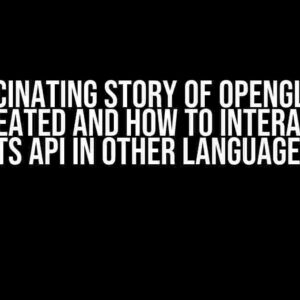In the world of web development, efficiency is key. When it comes to updating elements on a webpage, it’s essential to target only the specific elements that need changing, rather than re-rendering the entire DOM. In this article, we’ll dive into the world of update only specific elements, exploring the reasons why it’s crucial, and providing step-by-step guides on how to achieve it using various programming languages and frameworks.
Why Update Only Specific Elements?
So, why is it so important to update only specific elements? Let’s take a look at some of the reasons:
- Improved Performance**: When you update only specific elements, you reduce the load on the browser, resulting in faster page loads and improved overall performance.
- Enhanced User Experience**: By selectively updating elements, you can provide a seamless user experience, as only the relevant information is updated, without causing unnecessary page reloads or flickers.
- Reduced Resource Consumption**: Updating specific elements reduces the amount of data transferred between the client and server, resulting in reduced bandwidth consumption and lower server loads.
Identifying Elements to Update
Before we dive into the implementation, it’s essential to identify which elements need updating. Here are a few strategies to help you determine which elements require changes:
- Data Binding**: Use data binding techniques, such as those found in frameworks like Angular or React, to automatically update elements when the underlying data changes.
- Element Mutation Observers**: Utilize element mutation observers, like MutationObserver, to track changes to specific elements and update them accordingly.
- Event Listeners**: Attach event listeners to specific elements to detect changes and update them in response to user interactions or other events.
Updating Specific Elements using JavaScript
Now that we’ve identified the elements to update, let’s explore how to do it using JavaScript:
Using the `getElementById` Method
const elementToUpdate = document.getElementById('specific-element-id');
elementToUpdate.innerHTML = 'New content';In this example, we use the `getElementById` method to retrieve a specific element using its unique ID. We then update the element’s inner HTML using the `innerHTML` property.
Using the `querySelector` Method
const elementToUpdate = document.querySelector('.specific-class');
elementToUpdate.textContent = 'New content';In this example, we use the `querySelector` method to retrieve a specific element using its class name. We then update the element’s text content using the `textContent` property.
Updating Specific Elements using jQuery
For those using jQuery, updating specific elements is even more straightforward:
$('#specific-element-id').html('New content');In this example, we use the jQuery `$` function to select the element with the specified ID and update its inner HTML using the `html` method.
Updating Specific Elements using Frameworks
Modern front-end frameworks, such as React and Angular, provide built-in mechanisms for updating specific elements:
Using React’s `useState` Hook
import React, { useState } from 'react';
function App() {
const [message, setMessage] = useState('Initial message');
const updateMessage = () => {
setMessage('New message');
};
return (
<div>
<p id="specific-element-id">{message}</p>
<button onClick={updateMessage}>Update Message</button>
</div>
);
}In this example, we use the `useState` hook to create a state variable `message` and an `updateMessage` function to update it. When the button is clicked, the `updateMessage` function is called, updating the `message` state variable, which in turn updates the specific element with the new message.
Using Angular’s Template-Driven Forms
<input type="text" [(ngModel)]="message">
<p id="specific-element-id">{{ message }}</p>
<button (click)="updateMessage()">Update Message</button>In this example, we use Angular’s template-driven forms to bind the `message` variable to the input field and the specific element. When the button is clicked, the `updateMessage` function is called, updating the `message` variable, which in turn updates the specific element with the new message.
Best Practices for Updating Specific Elements
When updating specific elements, keep the following best practices in mind:
| Best Practice | Description |
|---|---|
| Use a unique ID or class | Identify elements using a unique ID or class to ensure targeted updates. |
| Minimize DOM manipulation | Update elements only when necessary, and batch updates together to reduce DOM manipulation. |
| Use data binding or observers | Utilize data binding techniques or element mutation observers to automatically update elements when the underlying data changes. |
Conclusion
In conclusion, updating only specific elements is crucial for efficient DOM manipulation, improved performance, and enhanced user experience. By identifying the elements to update, using JavaScript or framework-specific methods, and following best practices, you can ensure targeted updates that don’t compromise your webpage’s performance or user experience. Remember, in the world of web development, every millisecond counts, and updating only specific elements is a step in the right direction.
Here are 5 Questions and Answers about “Update only specific elements” in a creative voice and tone:
Frequently Asked Question
Get the scoop on updating specific elements with ease!
What’s the magic behind updating specific elements?
The magic lies in using clever selectors and cleverer coding! With CSS, you can target specific elements using classes, IDs, or attributes, making it a breeze to update only what you need.
How do I update only the text of a specific element?
Easy peasy! You can use the `:contains` pseudo-class in CSS to target elements that contain specific text, and then update the text content using JavaScript or jQuery. For example, `$(‘#myElement:contains(“old text”)’).text(‘new text>’);` would update the text of an element with the ID `myElement` that contains the text “old text” to “new text”.
Can I update multiple specific elements at once?
Absolutely! You can use a comma-separated list of selectors to target multiple elements at once. For example, `$(‘#element1, #element2, .class-name’).css(‘background-color’, ‘blue’);` would update the background color of elements with IDs `element1` and `element2`, as well as elements with the class `class-name`. Boom!
How do I update a specific element based on its attributes?
No problem! You can use attribute selectors to target elements based on their attributes and values. For example, `$(‘input[name=”myInput”]’)` would target an `input` element with the name `myInput`, and `$(‘a[hreflang=”en”]’)` would target an `a` element with the `hreflang` attribute set to `en`. Then, you can update the element as needed!
What’s the best way to handle updating specific elements in a large dataset?
When dealing with a large dataset, it’s essential to use efficient selectors and methods to avoid performance issues. Consider using jQuery’s `filter()` method or CSS’s `:not()` pseudo-class to narrow down the selection, and then update the elements in batches to avoid overwhelming the browser. You can also use caching or DOM manipulation libraries like React or Vue to make updates more efficient.





